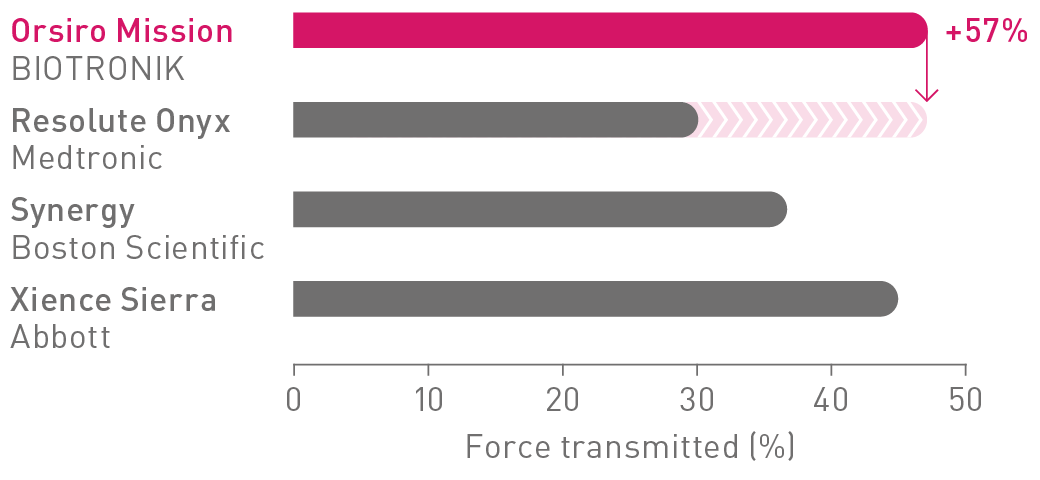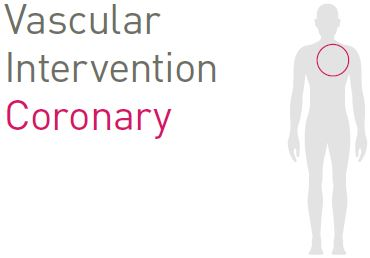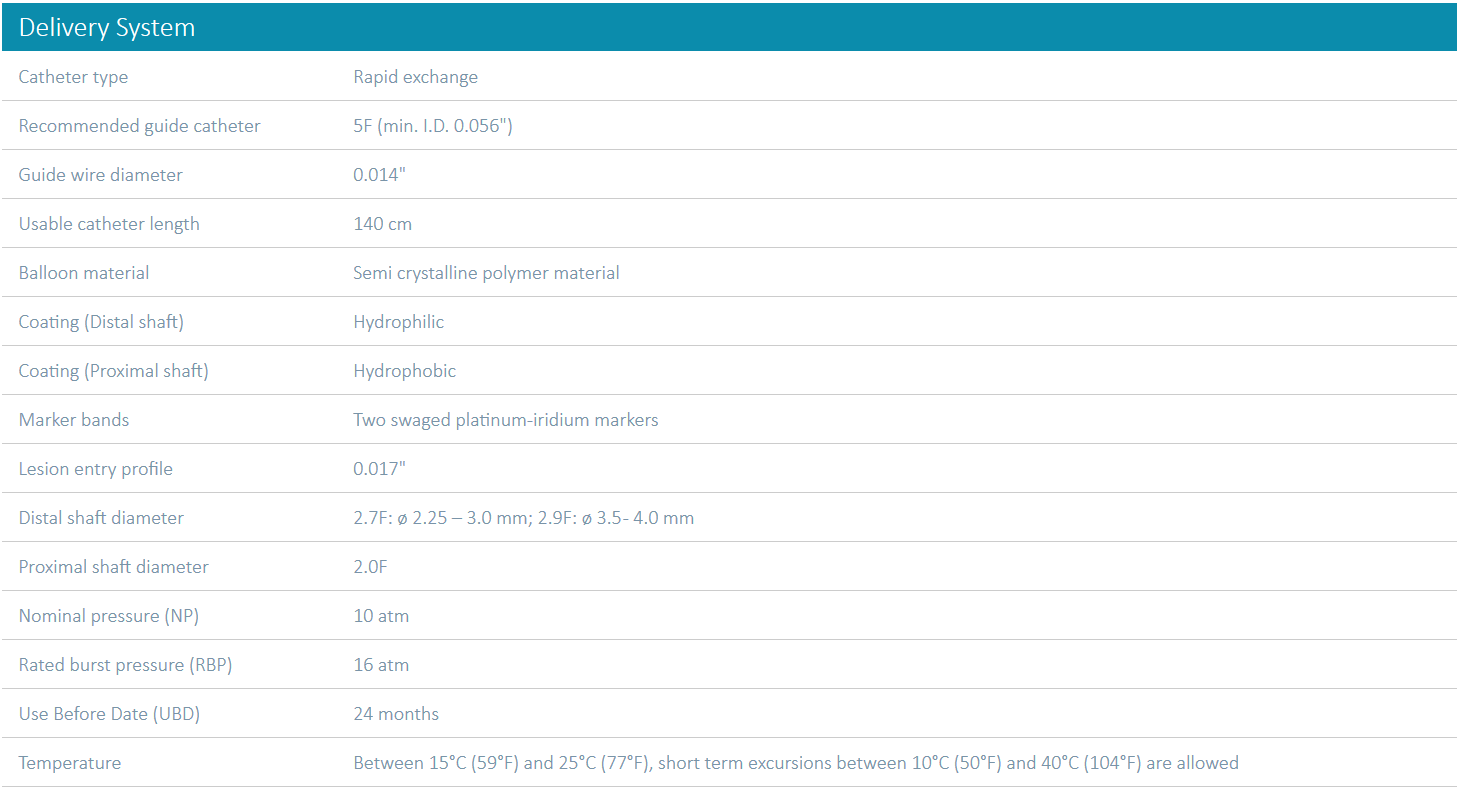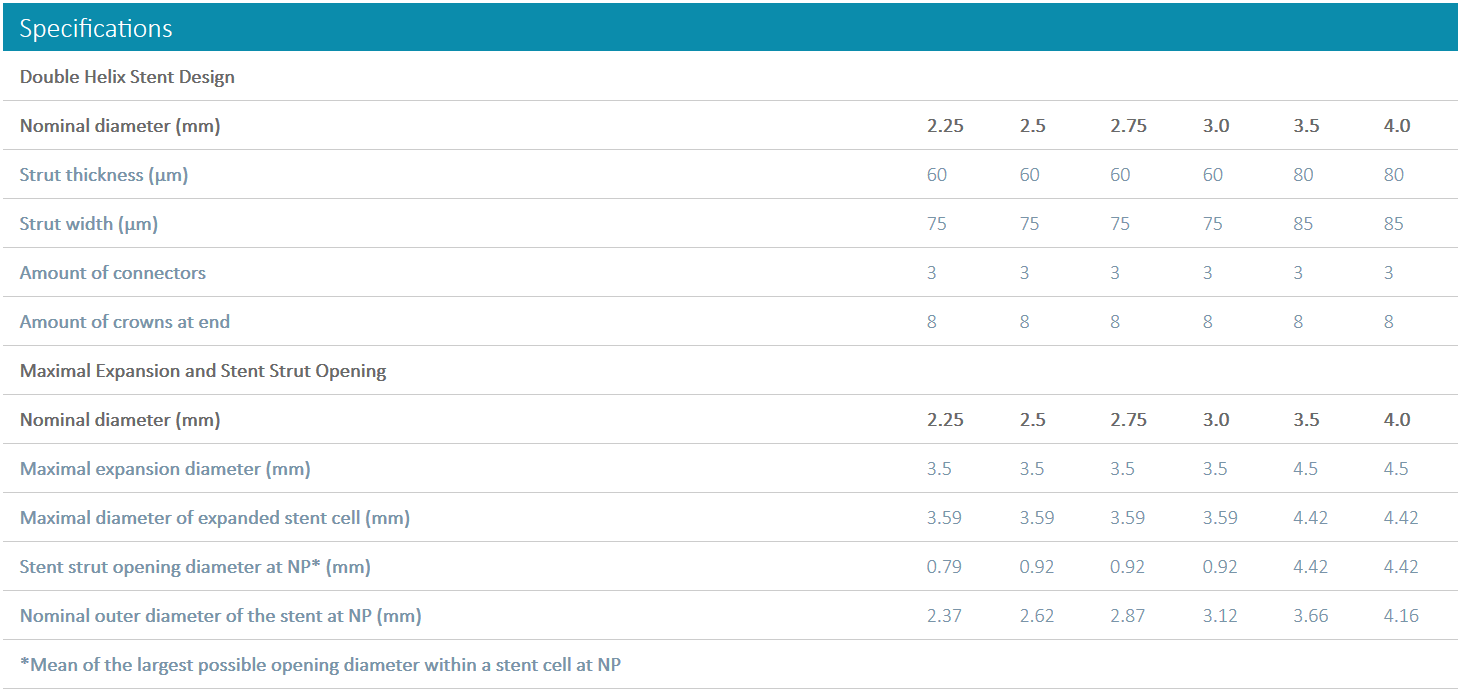Intervencionismo Vascular // Coronario
Drug-Eluting Stent System
Even better deliverability for the outstanding Orsiro DES
Learn more at orsiro-mission.com

El siguiente nivel de Navegabilidad1
1st in Push4
Transmitting up to 57% more force from hub to tip.

1st in Track4
Up to 30% less force needed to follow the path to the lesion.

1st in Cross4
Up to 75% less force needed to successfully cross demanding anatomies.



Ultrathin struts2
For early endothelialization

Long-term safety


Δ Images: Secco G et al. Time-related changes in neointimal tissue coverage
following a new generation SES implantation: an OCT observational study.
Presented at: euro PCR, May 20, 2014; Paris, France.
Clinical data conducted with Orsiro, Orsiro Mission’s predecessor device can
be used to illustrate Orsiro Mission clinical outcomes.

Outstanding patient outcomes3
Clinically proven Orsiro DES11, 12, 13, 14 BIOFLOW-V, FDA pivotal trial (n = 1,334)


Orsiro Mission is indicated for complex patients and lesions, including:*

◊Based on 36-m frequentist analysis.
*As per IFU: ACS – Acute Coronary Syndrome; STEMI – ST-Elevation Myocardial Infarction; DM – Diabetes Mellitus. HBR – High Bleeding Risk; B2C – Complex Lesions; SV – Small Vessels; MVD – Multi-Vessel Disease.
**BCI: Bayesian Credibility Interval.
‡Based on a Rate Ratio 0.59.

Orsiro Mission
The Orsiro Mission Sirolimus-Eluting Coronary Stent System is a drug-eluting balloon-expandable stent pre-mounted on a rapid-exchange PTCA catheter delivery system.
Orsiro Mission is indicated for improving coronary luminal diameter in patients with symptomatic ischemic heart disease due to discrete de-novo stenotic lesions and in-stent restenotic lesions (length ≤ 40 mm) in the native coronary arteries with a reference vessel diameter of 2.25 mm to 4.0 mm including the following patient and lesion subsets:
- Acute Coronary Syndrome (ACS)
- ST-Elevation Myocardial Infarction (STEMI)
- Diabetes Mellitus (DM)
- Diabetes Mellitus (DM) Complex Lesions (B2/C)
- High Bleeding Risk (HBR)
- Long Lesions (LL) (e.g. ≥ 20 mm)
- Small Vessels (SV) (e.g. ≤ 2.75 mm)
- Multi-Vessel Disease (MVD)
- Male/Female
- Old Patients (e.g. > 65 y)
Especificaciones



Referencias

Contact
1. In comparison to Xience Sierra, Resolute Onyx and Synergy for bench tests on pushability, trackability and crossability, BIOTRONIK data on file; 2. As characterized with respect to strut thickness in Bangalore et al. Meta-analysis; 3. Based on investigator’s interpretation of BIOFLOW-V primary endpoint result; 4. BIOTRONIK data on file; 5. Per investigators’ interpretation of preclinical studies with Orsiro as mentioned in Cassese et al. J Thorac Dis 2018;10(2):688-692; 6. Stefanini GG et al. Coronary stents: novel developments. Heart. 2014 Jul 1;100(13):1051-61; 7. Low AF. Stent platform for procedural success: Introducing the Continuous Sinusoidal & Core Wire Technologies. Presented at: AsiaPCR; 22-24 January, 2015; Singapore, Singapore; 8. Tolentino A. Evolving DES Strategy: Biodegradable Polymer vs. Bioabsorbable Scaffold. Presented at: Cardiovascular Nurse/Technologist Symposium; June 17, 2016; New York, USA; 9. Secco G et al. Time-related changes in neointimal tissue coverage of a novel Sirolimus eluting stent: Serial observations with optical coherence tomography. Cardiovascular Revascularization Medicine 17.1 (2016): 38-43; 10. Pilgrim T et al. 5-year outcomes of the BIOSCIENCE randomised trial. Supplementary appendix; Lancet 2018; published online Aug 28. http://dx.doi. org/10.1016/ S0140-6736(18)31715-X; 11. Kandzari D, et al. BIOFLOW-V: A Prospective Randomized Multicenter Study to Assess the Safety and Effectiveness of the Orsiro Sirolimus Eluting Coronary Stent System in the Treatment Of Subjects With up to Three De Novo or Restenotic Coronary Artery Lesions Science. Presentation at E SC 2017; 12. Kandzari D et al. Ultrathin Bioresorbable Polymer Sirolimus-Eluting Stents versus Thin Durable Polymer Everolimus-Eluting Stents: Journal of American College of Cardiology (2018), doi: https //doi.org/10.1 016/j.jac c.2018. 09.019; 13. Kandzari D et al. J Am Coll Cardiol. Cardiovasc Interven. 2020, doi: 10.1016/ j.jcin.2020.02.019; 14. Kandzari D et al. J Am Coll Cardiol. Cardiovasc Interven. 2020. Supplemental Material; 15. Iglesias JF et al. Biodegradable polymer sirolimus-eluting stents versus durable polymer everolimus-eluting stents in patients with ST-segment elevation myocardial infarction (BIOSTEMI): a single-blind, prospective, randomised superiority trial; Lancet, September, 2019; 16. Buiten R et al. Outcomes in patients treated with thin-strut, very thin-strut, or ultrathin-strut drug-eluting stents in small coronary vessels – A prespecified analysis of the randomized BIO-RESORT trial; JAMA Cardiol. Published online May 21, 2019. doi:10.1001/jamacardio.2019.1776; ClinicalTrials.gov: NCT01674803. Orsiro, Orsiro Mission, proBIO and BIOlute are trademarks or registered trademarks of the BIOTRONIK Group of Companies. Synergy and Promus are trademarks or registered trademarks of the Boston Scientific group of companies. Resolute, Resolute Onyx and Integrity are trademarks or registered trademarks of the Medtronic group of companies. Xience and Xience Sierra are trademarks or registered trademarks of the Abbott group of companies. Ultimaster is a trademark or registered trademark of the Terumo group of companies. BioMatrix is a trademark or registered trademark of the Biosensors International Group.




